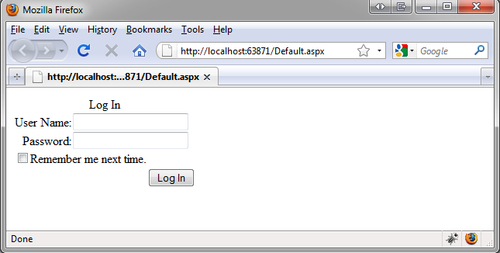Two of the controls you will need to get familiar with, if you are going to do security on your site, are the <asp:Login> and the
<asp:LoginStatus> controls to show the login and status to our users. These controls, along with the forms authentication model, provide a basic foundation for security in a .NET application.
The <asp:Login> control is a templated control like we discussed in Chapter 9, Binding Data. To add a login box, including Login and Password, to the page, we just need to add the <asp:Login> control to one of our pages.
<asp:Login ID="login" runat="server" />
With this simple line of code, our page will now render a login for us, ready to accept our login credentials, as shown in the following screenshot:

If we want our users to be directed to another page once they log in, we can add the DestinationPageURL
property, which will redirect them once they log in:
DestinationPageURL="support.aspx"
I know what you're thinking: We said...



